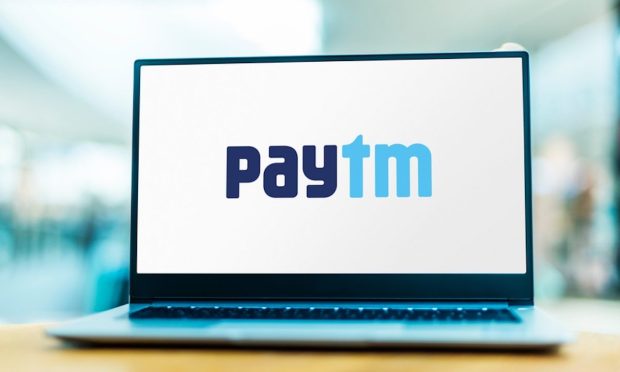Paytm’s Busted IPO Shows Investors’ Fears Over Long-Term Prospects

Paytm’s debut this week on the Bombay Stock Exchange, at the time of this writing, looks like the Ishtar of initial public offerings (IPOs). Lots of money and some star power – and out of the gate, it’s sinking like a stone.
Shares of Paytm’s parent company, One97, tumbled more than 25% on Thursday (Nov. 18), triggering trading halts at ₹1,560.
The vagaries of trading aside, it’s important to mull the whys in addition to where the shares are trading. Even at these levels, the company’s market cap is roughly $13 billion. Nothing to sneeze at, but well below the expectations that were set going into the trading, where the initial offer price had been ₹2,150.
The trading of stocks – no matter the exchange – is both a voting and weighing activity, to use a concept that is commonly attributed to value investing. The voting? Well, that’s a bit of a popularity contest. The weighing is a consideration of the eventual profits, the strategy and the top-line momentum that ultimately would reward holders of the stock. Thus far, concerns abound over those metrics.
As relayed by one analyst report from Macquarie, which initiated with an underperform rating (the equity analyst’s equivalent to “stay away”) and a price target with more than 40% downside from recent levels: “Unless Paytm lends, it can’t make significant money by merely being a distributor. We therefore question its ability to achieve scale with profitability.”
The analysts’ note also said that “most things that Paytm does, every other large ecosystem player like Amazon, Flipkart, Google, etc. is doing. The competition is quite evident in the buy now, pay later (BNPL) space, and distribution of various financial products. Longer-term, take rates in the distribution business will be driven southwards by competition and regulation.”
In other words, the listing may be historic for India and the size of the IPO is significant … and yet the fundamentals bear watching.
Digging into the actual filing, which debuted in July and runs nearly 500 pages, the company notes that India’s GDP was approximately US$2.7 trillion in 2020 and has been growing by about 7% annually – and is poised to accelerate, post-COVID, to 9%. Private consumption is slated to rise from $1.6 trillion in 2019 to as much as $2.5 trillion by 2025.
The country has been in the midst of a multi-year digital shift away from cash, and the digital payments volume is slated to grow by about 30% over the next few years, the company said – marked especially by mobile, where the value of those payments is on track to grow from $105 billion in FY2021 to $800 billion in FY 2026. One97/Paytm notes several secular payment trends in the filing, including BNPL, where the volume is about $15 billion to $20 billion in FY 2021 and may grow to a projected $100 billion in FY 2026.
And yet, the company warns in its filing that “we expect to continue to incur net losses for the foreseeable future, and we may not achieve profitability in the future.”
The company posted losses totaling ₹3.82 billion ($51.5 million) in the quarter that ended in June, more than the ₹2.84 billion loss for the same period in 2020.
Also see: Paytm Shares Plunge in India’s Market Debut
One wonders how much patience there is, overall, among investors. As the company noted in its filing: “When we become a listed company, we will incur additional significant legal, accounting and other expenses that we did not incur as an unlisted company.”
